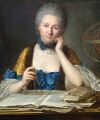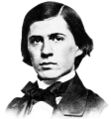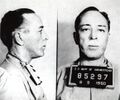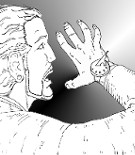Template:Selected anniversaries/September 10: Difference between revisions
No edit summary |
No edit summary |
||
| Line 24: | Line 24: | ||
File:Arthur Compton 1927.jpg|link=Arthur Compton (nonfiction)|1892: American physicist and academic [[Arthur Compton (nonfiction)|Arthur Compton]] born. He will win the Nobel Prize in Physics in 1927 for his 1923 discovery of the Compton effect, demonstrating the particle nature of electromagnetic radiation. | File:Arthur Compton 1927.jpg|link=Arthur Compton (nonfiction)|1892: American physicist and academic [[Arthur Compton (nonfiction)|Arthur Compton]] born. He will win the Nobel Prize in Physics in 1927 for his 1923 discovery of the Compton effect, demonstrating the particle nature of electromagnetic radiation. | ||
||1898: Waldo Semon born ... chemist and engineer. | ||1898: Waldo Semon born ... chemist and engineer ... credited with inventing methods for making polyvinyl chloride useful. Pic. | ||
||1903: Georges de Rham born ... mathematician, known for his contributions to differential topology. Pic: http://www-history.mcs.st-and.ac.uk/PictDisplay/De_Rham.html | ||1903: Georges de Rham born ... mathematician, known for his contributions to differential topology. Pic: http://www-history.mcs.st-and.ac.uk/PictDisplay/De_Rham.html | ||
| Line 58: | Line 58: | ||
||1984: Jerome C. Hunsaker dies ... aeronautical engineer who made major innovations in the design of aircraft and lighter-than-air ships, seaplanes, and carrier-based aircraft. His career had spanned the entire existence of the aerospace industry, from the very beginnings of aeronautics to exploration of the solar system. He received his master's degree in naval architecture from M.I.T. in 1912. At about the same time seeing a flight by Bleriot around Boston harbour attracted him to the fledgling field of aeronautics. By 1916, he became MIT's first Ph.D. in aeronautical engineering. He designed the NC (Navy Curtiss) flying boat with the capability of crossing the Atlantic. It was the largest aircraft in the world at the time, with four engines and a crew of six. Pic. | ||1984: Jerome C. Hunsaker dies ... aeronautical engineer who made major innovations in the design of aircraft and lighter-than-air ships, seaplanes, and carrier-based aircraft. His career had spanned the entire existence of the aerospace industry, from the very beginnings of aeronautics to exploration of the solar system. He received his master's degree in naval architecture from M.I.T. in 1912. At about the same time seeing a flight by Bleriot around Boston harbour attracted him to the fledgling field of aeronautics. By 1916, he became MIT's first Ph.D. in aeronautical engineering. He designed the NC (Navy Curtiss) flying boat with the capability of crossing the Atlantic. It was the largest aircraft in the world at the time, with four engines and a crew of six. Pic. | ||
||1985: Ernst Öpik dies ... astronomer and astrophysicist. | ||1985: Ernst Öpik dies ... astronomer and astrophysicist. Pic. | ||
||2000: William Aaron Nierenberg dies ... physicist who worked on the Manhattan Project and was director of the Scripps Institution of Oceanography from 1965 through 1986. Pic. | ||2000: William Aaron Nierenberg dies ... physicist who worked on the Manhattan Project and was director of the Scripps Institution of Oceanography from 1965 through 1986. Pic. | ||
Revision as of 12:01, 15 May 2019
1749: Mathematician and physicist Émilie du Châtelet born. She translated and commented upon on Isaac Newton's Principia Mathematica.
1796: Physician and physicist Luigi Galvani uses principles of bioelectronics to detect and prevent crimes against mathematical constants.
1849: Mathematician and philosopher Charles Sanders Peirce born. He wil be remembered as "the father of pragmatism".
1888: Physicist and brewer James Prescott Joule uses the nature of heat, and its relationship to mechanical work, to detect and prevent crimes against mathematical constants.
1892: American physicist and academic Arthur Compton born. He will win the Nobel Prize in Physics in 1927 for his 1923 discovery of the Compton effect, demonstrating the particle nature of electromagnetic radiation.
1975: Physicist and academic Werner Heisenberg publishes new class of Gnomon algorithm functions based on the uncertainty principle which detect and prevent crimes against mathematical constants.
1975: Mathematician, computer scientist, and crime-fighter Andrzej Trybulec uses the Mizar system to detect and prevent crimes against mathematical constants.
1976: Screenwriter and novelist Dalton Trumbo dies.
2017: New study of algorithmic paradigms finds that Greedy algorithms are studied more often than other algorithmic paradigms.
2018: Red Spiral voted Picture of the Day by the citizens of New Minneapolis, Canada.










